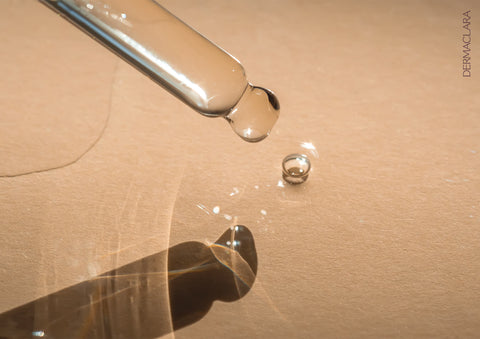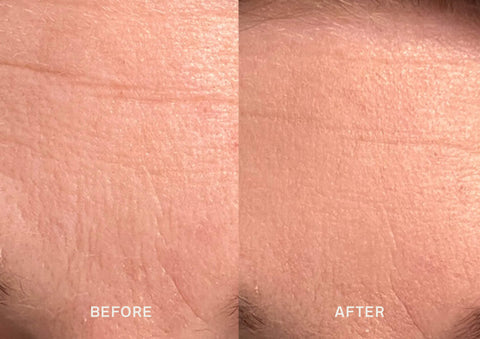Azelaic Acid: The Multitasking Miracle for Clearer, Brighter Skin

In the history of beneficial skincare, glycolic acid and salicylic acid have taken the popularity crown as they are regularly mentioned as the solution to one or more skin problems. Azelaic acid, a rare contender, seems to have caught the attention of many as the wonders of its skin-brightening properties have made news. This article provides answers to questions like “What is azelaic acid?” as well as numerous other benefits it offers.
What is azelaic acid?
Azelaic acid is a chemical compound found naturally in wheat and also produced by certain skin bacteria. It is used in cosmetics to unclog pores and exfoliate the skin. Azelaic acid comes in different concentrations ranging from 10%-20% and >15% and they are used to treat different acne severities.
Azelaic acid benefits
Azelaic acid is safe and gentle to use on the skin compared to other treatments. It has minimal side effects and fairs well with other skin products. One of the numerous azelaic acid benefits is reducing skin inflammation and redness by neutralizing the free radicals caused by oxidative stress.The skin-brightening properties of azelaic acid produce tyrosinase inhibitors to decrease hyperpigmentation and dark patches on the skin. Azelaic acid is great for acne breakouts as it acts like a bactericide to reduce the activity of acne-causing Propionibacterium.

Azelaic acid for rosacea
Azelaic acid for rosacea has become a common solution for this skin condition. This treatment has been researched and tested to treat rosacea and provides relief by reducing redness and swelling of the skin.Azelaic acid for acne
Azelaic acid for acne is the most common use of this skin product. Using its antibacterial properties, azelaic acid fights off acne-causing bacteria. It also performs well when compared to other acne treatments like benzoyl peroxide and oral tetracycline.Azelaic acid for hyperpigmentation
If you need a good product to lighten dark spots, then choose azelaic acid for hyperpigmentation. The skin-brightening abilities of azelaic acid treat all kinds of hyperpigmentation, including acne spots, melasma, and sunburn. It works by inhibiting tyrosinase, an important enzyme involved in melanin production.Is azelaic acid safe during pregnancy?
For pregnant and lactating women seeking answers, azelaic acid can be used during pregnancy as during research and testing, it had no effects on the fetus or the mother, making it safe to use. So, the answer to “Is azelaic acid safe during pregnancy?” question is YES.How to use azelaic acid
Azelaic acid is loved for its compatibility with many other skin care products. If you need a product that “plays” with other products in your skincare regimen, Azelaic acid is just for you. To enjoy Azelaic acid benefits, you must know how to use it properly. You can either follow your dermatologist's recommendation or adhere to the following procedures:- Cleanse or double cleanse your face with Dermaclara Clarasome Cleanser for at least 1 minute. Rinse with cold water and pat dry with a towel.
- Apply your toner to balance your skin's PH and follow up with retinol, then azelaic acid. (We do not advise you to mix your Azelaic acid with other skin products to prevent irritation.)
- Use your moisturizer and finish up with an SPF sunscreen. (If you are wondering when or if you should use azelaic acid before or after moisturizer, we advise you to use it before your moisturizer.)

Can you use azelaic acid and retinol together?
When layered properly, Azelaic acid and retinol provide immense benefits. Retinol is known to cause inflammation in many individuals while Azelaic works by treating or soothing inflammation. Together, you enjoy the cellular regenerative properties of retinol and the antibacterial properties of Azelaic acid.Can you use azelaic acid and niacinamide together?
Azelaic acid and niacinamide are two skin components that go well and also enhance each other's benefits. If you choose to pair them together, opt for low concentrations, especially if you have sensitive skin or simply use sunscreen each time you step out during the day.Can you use azelaic acid and vitamin C together?
You can use azelaic acid and vitamin C together to even your skin tone quickly and reduce scarring and hyperpigmentation as both products employ different mechanisms to fade dark spots. For people with sensitive skin, use sunscreen when you use them during the day.Azelaic acid vs salicylic acid
Azelaic acid vs Salicylic acid is another popular comparison between skin experts. Both products offer immense benefits but here's when to use either of them:- Skin type: If your skin type is oily or acne-prone, using salicylic acid as azelaic acid can increase oil production in certain individuals.
- Hyperpigmentation: To get rid of hyperpigmentation quickly, combine both products and use them regularly. Make sure you slowly introduce them into your skin regimen if you have sensitive skin. You can also prevent sensitivity by opting for formulations with lower concentrations.
Azelaic acid vs glycolic acid
Azelaic acid vs glycolic acid are two skin compounds that produce amazing results. Although there is no need to pitch them against one another, the following are what to consider before using any of them.- Skin sensitivity: If you have sensitive skin or are prone to redness, use azelaic acid as it is mildly sensitive to irritated skin.
- Hyperpigmentation: Azelaic acid is perfect for mild hyperpigmentation, usually caused by acne scars.
- Exfoliating power: Choose glycolic acid if you need a powerful exfoliant to improve your skin texture and overall complexion.
- Increased absorption: Use glycolic acid to exfoliate dead skin layers and eliminate product buildup. This will increase product absorption and produce great results.
When to use azelaic acid
While there are no standard rules on when to use azelaic acid, dermatologists recommend using azelaic acid day and night. This depends on what kind of products you intend to combine it with. If you are placed on retinol or retinoids, use azelaic acid at night as it can increase your skin's sensitivity to the sun. However, if you experience no negative side reactions, you can use both products during the day.You can either drop the product completely or build tolerance by introducing it slowly into your skin regimen, if your skin experiences one or more side effects. Start by applying it a few times a week before you apply it every day. As you build tolerance, make sure you use sunscreen with SPF 30 or above to reduce sensitivity during the day.
Leave a comment